How many continents are there on Earth?
7
What is a primary source?
A firsthand account from someone who witnessed or experienced an event
What term describes humans who hunted animals and gathered plants for food?
Hunter-gatherers
Which river valley civilization developed along the Tigris and Euphrates Rivers?
Mesopotamia
Who founded Buddhism?
Siddhartha Gautama (Buddha)
Which River Valley Civilization is it?
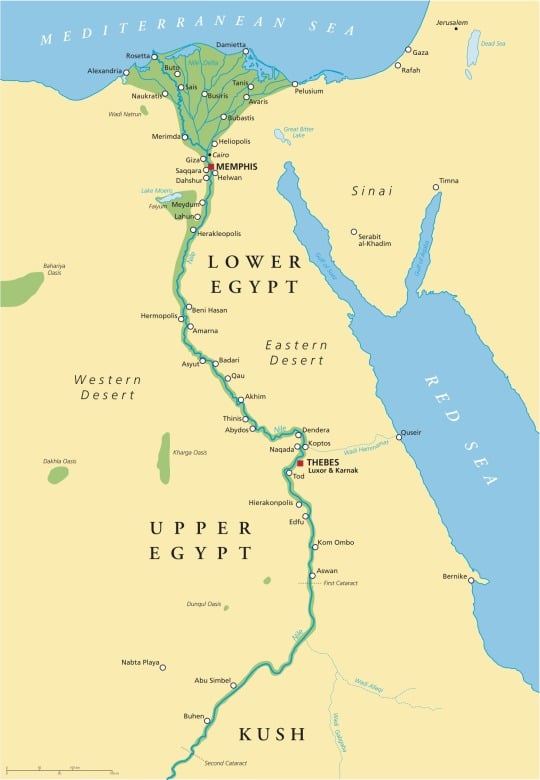
Ancient Egypt
Why do historians rely on both primary and secondary sources to understand ancient history? Give an example of each and explain their importance.
Primary Source: firsthand evidence (artifacts, diaries, tools, laws)
Secondary Source: interpretation or summary (textbooks, documentaries)
Using both helps verify accuracy and build a complete picture of the past.
Which ocean is the largest?
Pacific Ocean
What is a secondary source?
A summary or interpretation based on primary sources
What major change allowed humans to settle in one place and form civilizations?
Which river valley civilization developed along the Nile River?
Ancient Egypt
What is the holy book of Islam?
The Qur’an (Koran)
This tool made from stone helped early humans hunt and survive. What era does this belong to?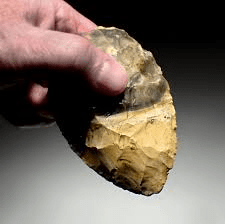
Paleolithic Era (Old Stone Age)
Explain how the Neolithic Revolution changed the way humans lived and interacted with their environment.
Humans shifted from nomadic life to permanent farming settlements.
Led to population growth, surplus food, specialization of labor, and development of government.
Marked the beginning of civilization.
Which two continents are completely in the Western Hemisphere?
North and South America
Give one example of a primary source and one of a secondary source.
Primary: Diary or artifact
Secondary: Textbook or documentary
What is the name of the period before written records?
Prehistory
What is Hammurabi’s Code, and why is it significant?
One of the first written law codes; it established rules and punishments
Which religions are known as the Abrahamic religions?
Judaism, Christianity, and Islam
The image shows large stone tablets carved with laws.
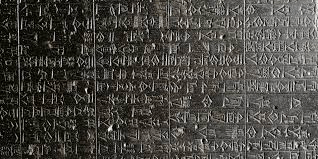
Hammurabi’s Code (Mesopotamia)
Rivers such as the Nile, Tigris-Euphrates, Indus, and Huang He all supported early civilizations. Explain how these rivers helped civilizations grow and how they also encouraged cultural diffusion between regions
Rivers provided fertile soil and water for agriculture.
Surplus crops led to population growth and city development.
Rivers acted as trade routes, spreading ideas, goods, and beliefs between regions.
Which continent is home to both the Nile and Congo Rivers?
Africa
Why are primary sources important to historians?
They provide direct evidence from the time period being studied
How did early humans adapt to their environments?
By using tools, clothing, and shelters made from local materials
How did geography influence the development of river valley civilizations?
Fertile soil and access to water allowed farming and trade
What common theme is shared by most major religions of the world?
Ethical teachings and belief in doing good
This image shows a structure used for religious worship in ancient Mesopotamia. What is it called?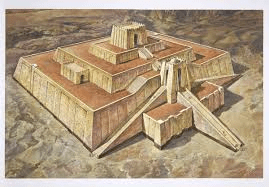
Ziggurat
In both Ancient Egypt and Mesopotamia, rulers were closely tied to religion. Compare how each civilization viewed the power of their rulers.
Egypt: Pharaohs were seen as gods on Earth.
Mesopotamia: Kings were chosen by gods but were not divine.
Both used religion to justify their authority and maintain order.
Why were early civilizations often located near rivers and coastlines?
Access to water for farming, trade, and transportation
A historian writes about ancient Egypt using artifacts and temple carvings. What type of source is their book?
Secondary Source
Explain why the Neolithic Revolution was a turning point in human history.
It shifted societies from nomadic to settled farming communities
Compare the roles of rulers in Mesopotamia and Egypt.
Both claimed divine authority; kings reflected gods’ will, pharaohs were gods on Earth
How did religions spread and change as they moved to new regions?
Followers adapted beliefs to include local traditions
This symbol represents a religion founded by Siddhartha Gautama. What religion does it represent, and what does the symbol mean?
Bonus 100 points if you can name the symbol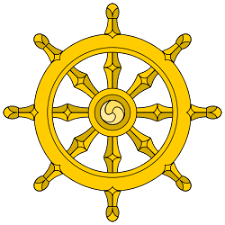
Buddhism – The Eightfold Path and cycle of life
Bonus: name of symbol (Dharmachakra)
Judaism, Christianity, and Islam are known as the Abrahamic religions. Identify two major beliefs or practices they share and one way they differ.
Monotheism (belief in one God)
Ethical teachings (kindness, honesty, justice)
Different:
Sacred texts: Torah, Bible, Qur’an
Founders and specific prophets (Abraham, Jesus, Muhammad)